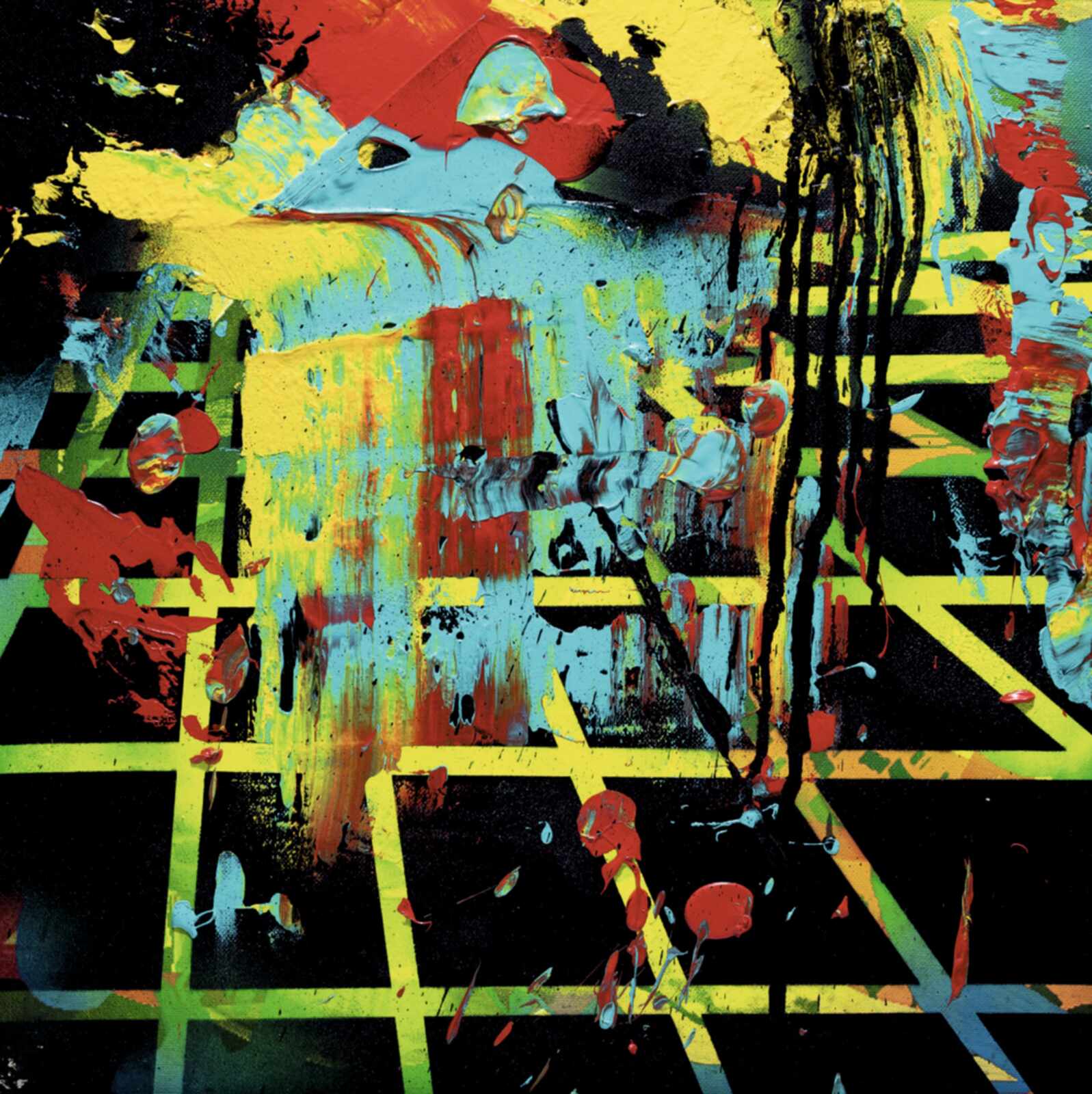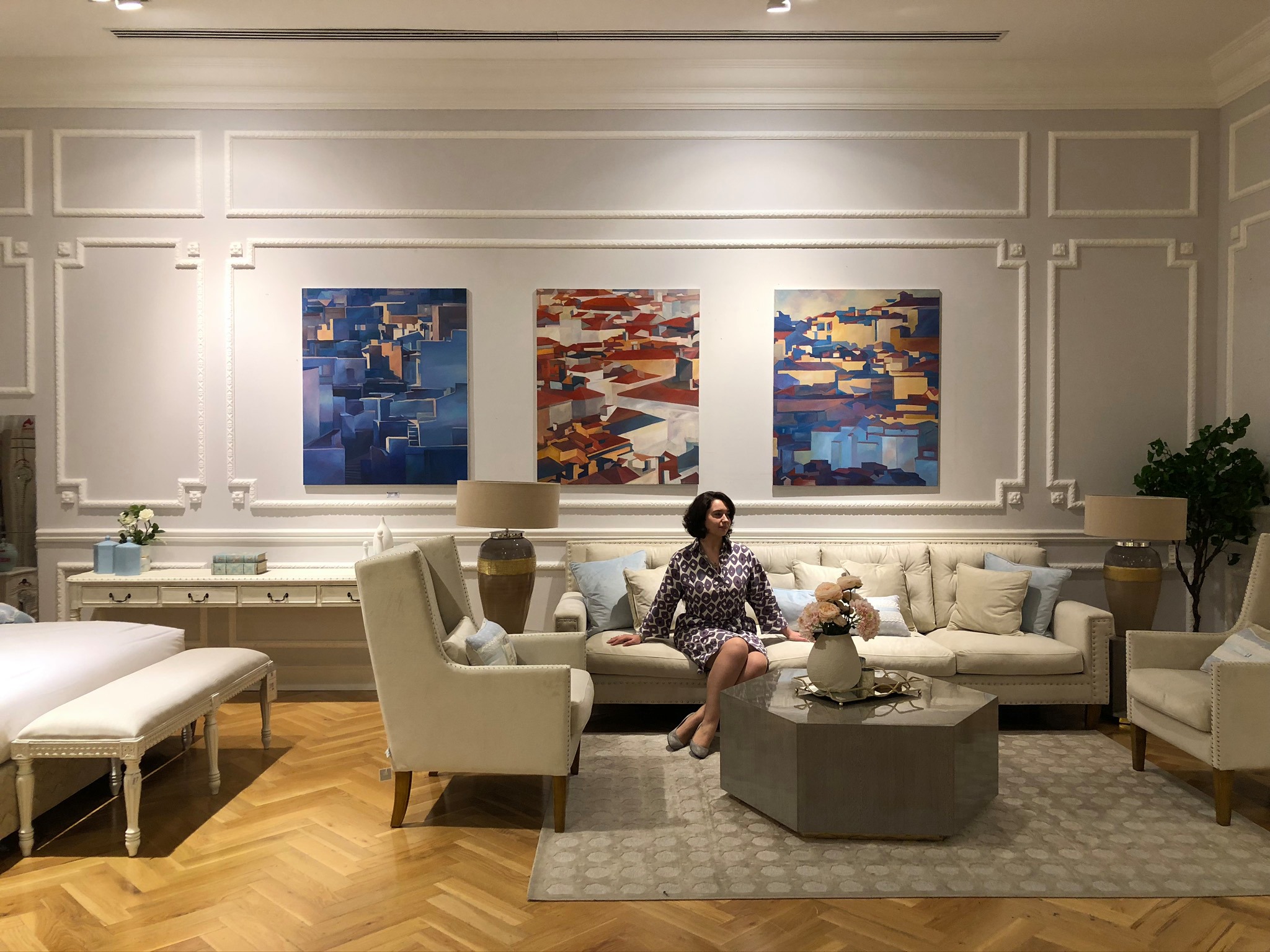Molding Anew reflects Abdul Jabbar’s process of arriving at her mode of artistic expression, weaving ancient Mesopotamian mythology with contemporary narratives and drawing on multiple mediums to reclaim, preserve, and transform the cultural legacy of her motherland by bringing it to life anew.
The design and organization of the exhibition are grounded on notions of seriality and multiplicity, inherent qualities in the work. The exhibition opens with Tracing Origins (2022), a series of foil imprints of miniature ceramic reliefs collected from Iraq by the artist’s mother. The transplanted palms and cultural motifs served as objects of childhood play and imagination, latent with meaning as they helped her construct an image of a home that was inaccessible to her, establishing her vocation of intertwining object, memory, and place.

EWCB 701 
EWCB 702
Abdul Jabbar’s work slices through thousands of years of history to reveal the often dormant narratives that resurface over time. For someone whose practice collapses time, working with clay is particularly significant because of its malleability, memory, and links to material culture and history. The exhibition will feature twenty ceramic sculptures from her Earthly Wonders, Celestial Beings (2019-ongoing) body of work, which was awarded the Richard Mille Art Prize in 2022. The existing works will be shown alongside thirty new sculptures produced for this exhibition, through which Abdul Jabbar highlights and expands on three sculptural groupings – fertility, eye idols, and crowns – symbolizing acts of living, seeing, and knowing. The representations of female figures and the palm tree compose her fertility series, gesturing at notions of birth, renewal, and abundance. Her eye idols, which recall artifacts exhumed from the ancient Mesopotamian Eye Temple at Tell Brak in 1937, hold the memory of all they have observed as they gaze out across the exhibition floor. Meanwhile, the crowns that she has molded represent for her the wisdom derived from the accumulated knowledge gathered from across the centuries.
The exhibition also features لیكن مذكوراً (may it be remembered) (2021), a work in which Abdul Jabbar draws on her research into the ancient city of Hatra to set the stage for describing our cyclical and multilayered relationship to land and its legacies of remembrance. Revealing glimpses into seismic moments and events that shaped the place into being, the nine mud sculptures that comprise that series serve as dual agents, performing as witnesses of history and actors within it.
From this expansive vocabulary of sculptural objects emerges her latest series, Alphabet (2024), in which she presents the iconography of her forms as an evolving language of signs and symbols. She has produced five varying compositions printed on linen using eighty individual blocks, each correlating to one of her sculptures. The panels correspond to the five chapters of the narrative text she wrote to accompany where myths are born of mud and desire, which also served as the central organizing narrative for this exhibition. One may perceive Abdul Jabbar’s body of work unfolded into these five chapters, but also begin to form new readings as they are traversed.
Facing this vast set of protagonists, Inanna’s Descent (2020-2024), a diptych carved in yellow limestone, stands as an ode to wayfinding and the search for belonging; for an arrival home— a sentiment that reverberates in every corner of the gallery.
About Rand Abdul Jabbar
Rand Abdul Jabbar (b. Baghdad, 1990) borrows from the vestiges and ephemera of history to produce reconstructions of its records, events and experiences. She contends with personal and collective memory while engaging in research around the resounding legacies of imperialism, archaeology, mythology and material culture. Employing sculpture, writing, video and installation as primary mediums, her work unfolds through an experiential dialogue between recollection and re-imagination, devising anchors that facilitate the retelling and adaptation of the past into a space for the reclamation of agency and affirmation of identity. Abdul Jabbar was awarded the Richard Mille Art Prize by Louvre Abu Dhabi in 2022. She received a Master of Architecture from Columbia University in 2014.
Recent exhibitions include In The Presence of Absence, Desert X Alula (2024), A Permanent Nostalgia for Departure: A Rehearsal on Legacy with Zaha Hadid, Contemporary Art Center, Cincinnati (2023); And the Mirrors Are Many, 421, Abu Dhabi (2023); Icon. Iconic: Richard Mille Art Prize, Louvre Abu Dhabi (2022); For the Phoenix to find its form in us. On Restitution, Rehabilitation and Reparation, SAVVY Contemporary, Berlin (2021); Phantom Limb, Jameel Arts Centre, Dubai (2019); This Land’s Unknown, Biennale d’Architecture d’Orleans (2019); and An Instant Before the World, Biennale d’art contemporain de Rabat (2019).
Her work and writing has been published in numerous publications including In Plain Sight: Scenes from Aridly Abundant Landscapes (Kaph Books), Monumental Shadows (Kaph Books), Architecture of Culture (Irthi Contemporary Crafts Council), Architecture of the Territory: Constructing National Narratives in the Arab World (Kaph Books), Woman Made: Great Women Designers (Phaidon), Between East and West: A Gulf (Actar Publishers), and WTD Magazine.
She lives and works in Abu Dhabi, UAE.



